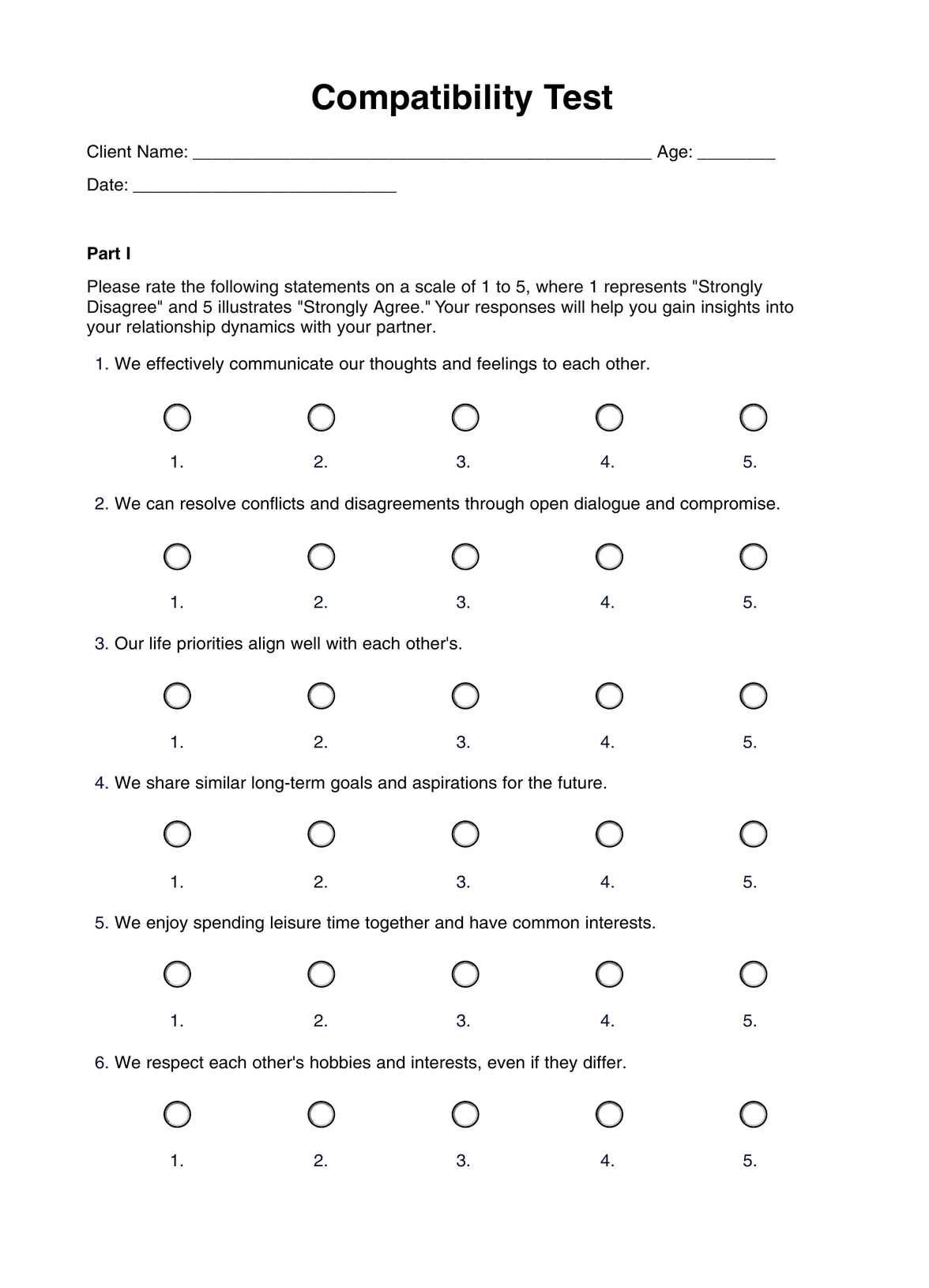Various factors can influence compatibility, including shared values, communication styles, emotional connection, mutual respect, love compatibility, and similar life goals.

Compatibility Test
Understanding compatibility in relationships is crucial for building strong connections. Discover what it means and how to assess it through our free Compatibility Test.
Use Template
Compatibility Test Template
Commonly asked questions
Yes, compatibility can evolve as individuals grow, change, and experience new life events. Effective communication and mutual adaptation in love life are essential for maintaining compatibility.
Open and honest communication is vital. Discuss the areas of difference openly, seek compromise where possible, and consider seeking professional counseling to navigate challenges constructively.
EHR and practice management software
Get started for free
*No credit card required
Free
$0/usd
Unlimited clients
Telehealth
1GB of storage
Client portal text
Automated billing and online payments











